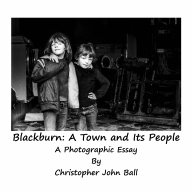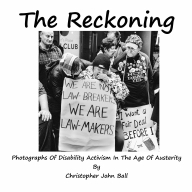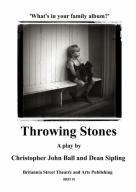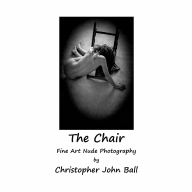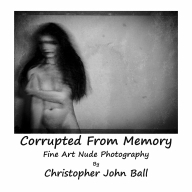
The Kallitype Photographic Process - A Short Introduction by Christopher John Ball

Tweet
The Kallitype is another process that uses ferric salts with silver nitrate and produces a brown-tone image. It was introduced by Dr. W. J. Nichol in 1899 and was based on Herschel's argentotype (1842). It is similar in appearance to a platinotype but is formed of a metallic silver instead of platinum.
Formula one:
The three part solution is below. After the individual solutions have dissolved, combine A and B then slowly add C while stirring constantly. This solution has a shelf life of about 2 years if stored in a brown bottle in a dark place. With age, the prints will yield richer brown tones.
Part A:
Distilled water 33ml
Ferric ammonium citrate 9g
Part B:
Distilled water 33ml
Tartaric acid 1.5g
Part C:
Distilled water 33ml
Silver nitrate 3.8gExpose the sensitised paper in contact with the chosen negative to sunlight or UV light. Exposure can be anywhere from 2 minutes to an hour. Develop in running water for one minute then fix in a hardening fixer diluted 1:16 for five minutes. The image will darken as the image becomes permanent. Wash as a normal print for about 40 minutes and dry.
Formula two:
Part A:
Ferric Oxalate 112g
Potassium Oxalate 28g
Silver Nitrate 28g
Water to make 500ml.Coat the paper with the above solution. When dry, place the negative in contact with the emulsion/paper and expose in a UV source until only the shadows are visible. Then develop the print in the following solution;
Part B:
Borax 25g
Sodium Potassium Tartrate (Rochelle Salt) 30g
Water to make 500ml
Use a ferric ammonium citrate sensitiser, and development in water, produced warm sepia tones.
The print is fixed in a 3% sodium thiosulphate solution, made slightly alkaline with ammonia.
Formula for American Kallitype:
Based upon the Jas Thomson process and consists of a separate salting and sensitising solutions.
Salting Solution:
Ferric-ammonio Citrate 45g
Ferric Oxalate 27g
Potassium Oxalate 27g
Copper Chloride 13.5g
Oxalic Acid 9g
Gum Arabic 23g
Distilled Water 1litre.Coat the paper with the above formula. If you would like a more velvety tone then size the paper first. Once dry treat the paper with the following solution:
Sensitiser:
Oxalic Acid 5g
Citric Acid 45g
Silver Nitrate 113g
Water 1litre.When dry, place the negative to be printed in contact with the paper and expose to a UV light source. A starting exposure of about 4 minutes should be adequate. The image will look brownish on a yellow background. Stop the exposure before the half tones appear. Develop the print in running water for about 3 minutes. After washing, fix in a weak hypo solution. After a final wash of about 1/2 an hour hang the print to air dry.
Various Tones are possible via substituting one of the following developing formulae:
For Black Tones:-
Borax 110g
Sodium Potassium Tartrate 83g
Potassium Bichromate (1% solution) 115ml
Water 1litre.For Sepia Tones:-
Sodium Potassium Tartrate 55g
Potassium Bichromate (1% solution) 70ml
Water 1 litre.For Purple Tones:-
Borax 30g
Sodium Potassium Tartrate 110g
Potassium Bichromate (1% solution) 115ml
Water 1 litreFor Maroon Tones:-
Sodium Potassium Tartrate 110g
Sodium Tungstate 55g
Water 1 litre.The print is developed in one of the formulae for between 15 and 30 minutes. Although the image may appear quickly, the print must remain in the solution for the time stated so as to render the iron salts soluble. The print is then put, without washing, into the following fixer for about 10 minutes:
Sodium Hyposulphite 55g
Liquor ammonia 13ml
Water 1 litre.Wash the finished print in water for about 20 minutes.
After Treatment:
Kallitype prints can be treated in many of the same ways as conventional monochrome prints in so far as they can be toned, reduced, re-developed and intensified.
Over-exposed prints can be reduced by placing in a weak solution of hydrobromic acid for about 3 minutes followed by washing for 30 minutes Another method is to immerse the print in the solution for a few seconds and then place in a weak hypo fixing bath followed by washing. This method increases contrast considerably and can be used to get good prints from weak negatives.
To intensify a kallitype use the same methods as for Bromide.
July 2024 Several books, featuring Christopher John Ball's photographs, are now available through Amazon or click on an image below to purchase via secure payments on lulu.com

Tweet


